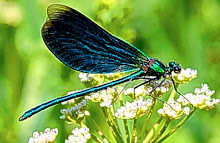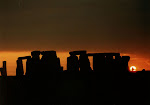
The exploitation of fossil fuels
to satisfy the majority of our energy needs impacts on the environment, economics, and politics — and drives continued and often heated public debate. Here Nature presents a web focus on some of the many implications of hydrocarbon fuel usage. This includes collections of reviews, features and original research on the economic, social and environmental impact of fossil fuels, the science of fuel formation and extraction, and future energy reso urces.
urces.BIRDS
What Is a Bird?
There are about 10,000 bird species, found in every shape and size, from the tiny hummingbird to the majestic condor. They occur in all the colors of the rainbow and are loved for their musical songs. Some birds can even mimic human speech. All birds lay eggs to incubate their young, and all have feathers—a trait no other animals can claim. Birds also have wings, evolutionary adaptations of ancient forelimbs. Most use their wings for flight, but others, like ostriches and penguins, are grounded.
Owls have long been a part of human folklore and legend.Owls are depicted in cave paintings in France that date back 15,000 to 20,000 years. Owls also are used in Egyptian hieroglyphics. They have held a variety of symbolic roles in culture and have represented misfortune, death, prosperity, and wisdom.
Owls (Order Strigiformes) are a group of birds known for their distinct calls, nocturnal habits, and silent flight. Owls are familiar to many people because they are often depected in various ways in popular culture. For instance, owls are often among the animals we associate with Halloween. They are also a favorite character in a variety of children's stories, such as Winnie the Pooh, The Secrets of NIMH, and Harry Potter. But widespread understanding about this unique group of birds is often quite limited. So in this article, I'd like to explore ten things we should all know about owls:
But widespread understanding about this unique group of birds is often quite limited. So in this article, I'd like to explore ten things we should all know about owls:
1. Owls belong to the Order Strigiformes.The Order Strigiformes is further divided into two families, the barn owls (Family Tytonidae) and the typical owls (Family Strigidae). Owls are a diverse group of birds, with over 220 species of owls belonging to the Order Strigiformes.
2. Owls are birds of prey.Owls feed on a wide variety of prey including mammals, other birds, insects, and reptiles. There are even some species of owls that live in Africa and Asia that feed on birds. Owls cannot chew their prey since, like all birds, they do not have teeth. Instead, they swallow small prey whole and must tear larger prey into smaller pieces before swallowing. They later regurgitate pellets of indigestible material such as bone, fur, and feathers.
3. Most owls are nocturnal.Most owls are active at night. A few species (such as the pygmy owls) are active in the early morning or at dusk while some (such as the burrowing owl and the short-eared owl) are active during the day.
Habitat
Grassland, Found in open habitats, such as grasslands, deserts, marshes, and agricultural fields.
Food: Mammals, Small mammals.
Nesting - Nesting Facts
Clutch Size
2–18 eggs
Egg Description: Dull white.
Condition at Hatching
Helpless and covered with white down.
Nest Description
Nests in hollow trees, cliff cavities, in buildings, and nest boxes. Nest cup made from shredded owl pellets.
ground.






















































